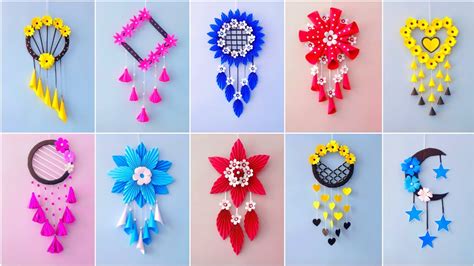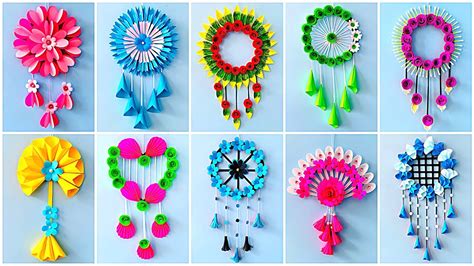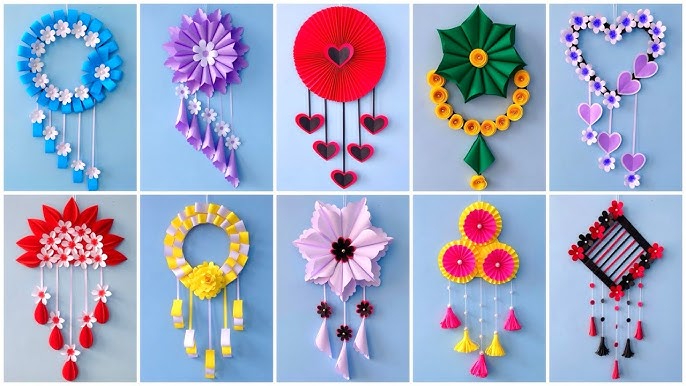Incorporating art into your home decor is a powerful way to infuse personality, creativity, and warmth into your living space. Whether you’re an art enthusiast or just starting to explore the world of home design, finding the right balance between aesthetics and functionality can transform your home into a true reflection of your style. In this article, we’ll explore ten creative ways to seamlessly blend art with your decor, from crafting gallery walls to incorporating functional art pieces. These tips will help you enhance your home’s ambiance and create a space that is both visually appealing and uniquely yours.
shzow.com invites you to delve into this topic thoroughly.
1. Gallery Walls: Tips on creating cohesive and visually appealing gallery walls.
Creating a gallery wall is a fantastic way to showcase your favorite art pieces while adding character to any room. The key to a cohesive and visually appealing gallery wall is thoughtful planning and arrangement. Start by selecting a theme or color palette that reflects your style, whether it’s a mix of family photos, abstract art, or a combination of various pieces.
Next, consider the layout. Before hanging anything, arrange your pieces on the floor to experiment with different configurations. A common approach is to choose a central piece as the focal point and build outwards, ensuring balance in size and spacing. You can opt for symmetrical layouts for a formal look or an asymmetrical arrangement for a more casual feel.
When it comes to frames, consistency is crucial. Using similar frames can unify the display, while a mix of frame styles and colors can add visual interest if done thoughtfully. Finally, consider the height and spacing between each piece. Aim to place the center of the gallery wall at eye level, and keep the spacing consistent to maintain a clean, polished look. This careful planning will result in a gallery wall that is both cohesive and captivating.

2. Statement Pieces: How to choose and display large, impactful art pieces.
Statement art pieces have the power to transform your home decor, acting as focal points that command attention and establish the mood for the entire space. When selecting a statement piece, carefully consider the size, color, and style that best harmonize with your existing décor. A large, impactful artwork can serve as the anchor of a room, so it’s crucial to choose something that reflects your personal taste and complements the overall design of your home.
Begin by selecting the wall or area where you’ll display your statement piece. This could be above a fireplace, sofa, or even in an entryway. The artwork should be large enough to be eye-catching but not so dominant that it overpowers other elements in the room. When considering color, opt for a piece that either harmonizes with or creates a contrast against your existing color scheme. A bold, vibrant piece can add energy to a neutral room, whereas a more subdued piece can bring serenity to a vibrant space.
To amplify the impact of your statement piece, consider using lighting to accentuate it. Picture lights, spotlights, or even natural light can effectively draw attention to the artwork, transforming it into the room’s focal point. Strategically placed and thoughtfully chosen lighting will ensure that your statement piece not only commands attention but also complements your overall decor.

3. Mixing Art Styles: Balancing different art styles for a harmonious look.
Mixing different art styles in your home decor can create a dynamic and visually intriguing space, but achieving a harmonious look requires careful balance. Start by identifying a unifying element that ties the various pieces together, such as a common color palette, theme, or frame style. This will help create a cohesive feel, even if the artworks differ in style.
When blending styles, consider the scale and proportion of the pieces. Pairing a large, contemporary abstract painting with smaller, more traditional works can create a layered and sophisticated look. The key is to maintain a sense of balance so that no single piece overwhelms the others.
Placement is also crucial. Arrange your artwork in a way that allows each piece to stand out while complementing its neighbors. You can mix styles within a gallery wall, or opt to place contrasting pieces in different areas of the room to create a sense of flow.
Finally, trust your instincts. Art is personal, and your space should reflect your unique taste. By thoughtfully mixing different art styles, you can create a home that is not only visually interesting but also a true reflection of your personality.

4. Functional Art: Incorporating art into everyday items and furniture.
Incorporating functional art into your home decor allows you to blend beauty with practicality, transforming everyday items and furniture into artistic expressions. Functional art pieces, such as designer chairs, artistic lighting fixtures, or unique shelving, serve both a practical purpose and add an artistic flair to your space.
When selecting functional art, consider pieces that align with your overall decor style while adding a touch of creativity. For instance, a sculptural coffee table or a hand-painted room divider can become a conversation starter while still serving its intended function.
Additionally, consider using textiles as functional art. A beautifully woven tapestry, vibrant area rug, or custom cushions can introduce texture and color, enhancing the room’s visual appeal.
The key to successfully incorporating functional art is to ensure that each piece contributes to the room’s aesthetics without sacrificing its utility. By choosing items that are both practical and visually appealing, you can create a living space that is not only functional but also rich in artistic expression.
5. Rotating Displays: Ideas for regularly updating and refreshing your art displays.
A simple yet effective way to keep your home decor fresh and engaging is to regularly update your art displays. By rotating displays throughout the year, you can showcase different pieces, imbuing your space with a dynamic and evolving feel.
One approach is to swap out artwork seasonally, reflecting the colors and themes of each time of year. For example, vibrant, nature-inspired pieces might be perfect for spring and summer, while warm, textured art can create a cozy atmosphere in fall and winter.
Another idea is to create a rotating gallery wall. Use interchangeable frames or shelves to make it easy to switch out pieces without much hassle. This allows you to experiment with different layouts and themes over time.
If you have a collection of art that you love, consider organizing it by theme, artist, or color palette, and rotate these collections regularly. This keeps your decor fresh while allowing you to enjoy all of your favorite pieces without overwhelming your space. Regularly updating your displays keeps your home looking current and allows you to explore different artistic expressions.
6. DIY Art Projects: Easy and creative do-it-yourself art ideas for personalized decor.
Creating DIY art projects is a fun and cost-effective way to add a personal touch to your home decor. With a little creativity and basic supplies, you can craft unique pieces that reflect your style and enhance your living space.
One popular project is making abstract canvas art. You don’t need to be a professional artist—simply choose colors that match your decor and use techniques like pouring, splattering, or layering to create an eye-catching piece. Another idea is to repurpose materials you already have at home. For example, turning old fabric scraps into a colorful, framed collage can add texture and personality to your walls.
For a more interactive approach, consider creating a photo wall with your favorite memories. Print photos in black and white or a sepia tone for a cohesive look, and arrange them in a pattern that complements your room’s design.
If you enjoy crafting, handmade items like painted pots, custom lampshades, or decorative trays can serve as both functional and artistic elements in your home. DIY art projects not only allow you to express your creativity but also help make your space truly one-of-a-kind.
7. Art in Unexpected Places: Suggestions for placing art in less conventional spaces, like bathrooms or kitchens.
Incorporating art into unexpected places can add unique character and visual interest to your home. While living rooms and galleries are traditional spots for art, placing pieces in unconventional spaces like bathrooms and kitchens can create delightful surprises and enhance the overall aesthetic of your home.
In the bathroom, consider adding a piece of art above the sink or toilet. Opt for water-resistant frames or materials to withstand humidity. Small prints or colorful abstract pieces can make the space feel more personalized and inviting. For a cohesive look, coordinate the artwork with your bathroom’s color scheme and accessories.
Kitchens offer another great opportunity for artistic expression. Hang a series of small, food-themed prints or a large, vibrant artwork above the dining area or breakfast nook. Magnetic or chalkboard art can also be a fun, interactive addition to a kitchen, allowing you to switch out designs and messages as desired.
Even in hallways or entryways, art can make a significant impact. Consider a slim, vertical piece or a series of small artworks to create a gallery effect. Placing art in these less conventional spaces not only adds visual interest but also brings a touch of creativity and personality to every corner of your home.
8. Lighting Techniques: Using lighting to enhance and highlight your art.
Lighting plays a crucial role in how your art is perceived and appreciated. Proper lighting can enhance and highlight your pieces, making them truly stand out. To achieve this, consider using dedicated art lighting fixtures, such as picture lights or adjustable spotlights. These fixtures can be mounted on the wall or ceiling, allowing you to direct light precisely onto your artwork. This focused illumination will ensure your art catches the eye and is showcased to its full potential.
When positioning lights, strive for a balanced illumination that avoids harsh glares or shadows. The light should accentuate the artwork’s textures and colors without overpowering them. For paintings or prints, a subtle angle of light can enhance depth and detail.
For a more dynamic effect, consider incorporating dimmable lights or smart lighting systems. These options allow you to adjust brightness and color temperature, adapting to the time of day or your desired mood. This flexibility ensures your art is always displayed in the most flattering light, adding
9. Color Coordination: Integrating art with your home’s color scheme for a unified look.
Color coordination between your art and your home’s color scheme is key to creating a unified and harmonious look. Start by choosing art pieces that complement or enhance the existing colors in your decor. For example, if your room features a neutral palette, select artwork with pops of color that align with accent hues in your furnishings or accessories. This creates a cohesive look without overwhelming the space.
Alternatively, use art to introduce new colors to your decor. Select pieces that incorporate colors you wish to bring into the room, and ensure that these tones are echoed in other elements, such as cushions, rugs, or curtains. This approach can refresh the space and establish a balanced color scheme.
When arranging art, consider the overall color balance. For large, colorful pieces, keep surrounding decor in more subdued tones to let the artwork shine. Conversely, if your art is more subdued, you can use bolder decor elements to create a vibrant and dynamic environment. This thoughtful integration of color ensures that your art enhances and enriches your home’s aesthetic.
10. Framing and Presentation: Different framing options and presentation styles to complement your decor.
The way you frame and present your art is key to making it look its best and fitting in with your home decor. The frame you choose can completely change how people see your art, so it’s vital to pick one that goes well with the style of your home.
For a classic and polished look, choose traditional frames in neutral tones like black, white, or wood. These frames offer a timeless feel and complement a wide range of art styles and color schemes. If you prefer a contemporary aesthetic, consider sleek, minimalist frames or even frameless options such as float mounts. These choices emphasize the artwork itself, minimizing the frame’s presence.
Matting can elevate the presentation of your artwork. A carefully selected mat not only adds visual appeal but also draws attention to the piece, separating it from the wall. This creates a polished and professional aesthetic.
Furthermore, the placement of your artwork is crucial. A solitary, expansive frame can act as a central point of interest, whereas a collection of smaller frames can evoke the ambiance of a gallery. Integrating diverse framing styles under a cohesive motif can inject depth and individuality into your arrangement, guaranteeing that each piece harmonizes and elevates the overall aesthetic.
Incorporating art into your home decor offers endless opportunities to express your style and creativity. By thoughtfully arranging gallery walls, selecting impactful statement pieces, and balancing different art styles, you can transform your living space into a unique and personalized environment. Experimenting with functional art and rotating displays keeps your decor dynamic, while placing art in unexpected spaces adds unexpected charm. Utilize lighting and color coordination to highlight and integrate your artwork seamlessly. With various framing and presentation options, you can elevate each piece to its full potential, creating a cohesive and inspiring home.
shzow.com
